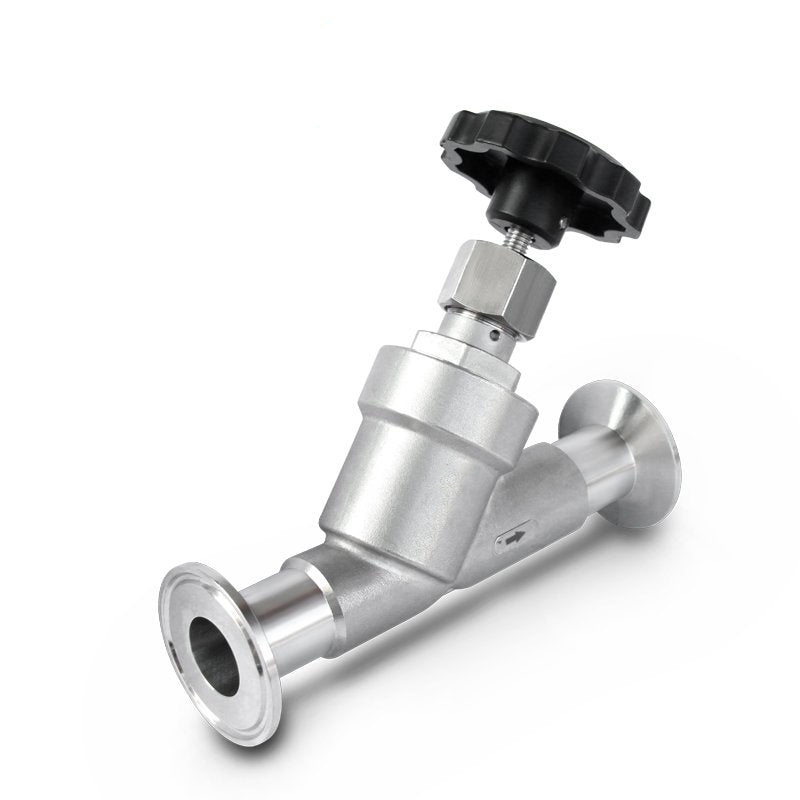
Butterfly Valve Tech: 7 Temperature Sensor Hacks to Elevate Your Brewing 🚀
Share
butterfly valve, butterfly valve stainless, and Temperature Sensor – these three components may sound technical, but they’re the unsung heroes of modern brewing. In every SKE Equipment brew house, from mash tun to bright tank, stainless butterfly valves regulate flow with precision, while temperature sensors ensure each batch hits its sweet‐spot. In this post, we’ll explore why breweries rely on butterfly valves, what makes stainless models indispensable, the critical role of temperature sensors, and best practices for operation and maintenance. Let’s dive in! 🍺
1. Why Breweries Use Butterfly Valves 🦋
Butterfly valves are wafer‐style flow controllers featuring a rotating disc that opens or closes against a seat. Here’s why they’ve become so popular in brewing:
-
Quick Operation: A simple 90° turn throttles flow on or off instantly—vital during CIP (Clean‐In‐Place) when you need to switch lines fast.
-
Compact Footprint: Unlike bulky ball valves or gate valves, butterfly valves stainless designs slip into tight piping runs, maximizing space in SKE Equipment skid frames.
-
Low Pressure Drop: The streamlined disc minimizes turbulence, protecting delicate wort and preserving head retention.
-
Cost‐Effective: Fewer components mean lower initial cost and maintenance expenses compared to other valve types.
“Switching to butterfly valves stainless models from SKE Equipment shaved 30 seconds off our CIP cycles—small gains that add up!” – Head Brewer, Golden Grain Brewery
2. The Edge of Stainless Steel Butterfly Valves 🌟
When your brewery runs 24/7, corrosion resistance is non‐negotiable. Here’s why butterfly valve stainless variants are the industry standard:
-
Corrosion & Sanitation: 316L stainless withstands acidic washes and hot caustic solutions without pitting.
-
Hygienic Design: Smooth interiors and crevice‐free construction eliminate bacterial traps—essential for BCB London–approved processes.
-
Durability: Stainless components resist wear from high‐flow CIP jets, extending valve life to years of continuous use.
| Feature | Carbon Steel Valve | Stainless Butterfly Valve |
|---|---|---|
| Corrosion Resistance | Low | Very High |
| Cleanability | Moderate | Excellent |
| Maintenance Interval | Monthly | Quarterly |
| Initial Cost | Low | Moderate |
| Lifecycle Cost | High | Low |
3. Mastering Flow Control with SKE Equipment 🛠️
At SKE Equipment, our butterfly valve stainless lineup integrates seamlessly into turnkey brewing systems:
-
Actuated Options: Electric and pneumatic actuators for automated batching.
-
Compact Actuator Mounts: Saves rail space in tight skids.
-
Built‐In Position Feedback: Digital signals feed directly into SCADA for real‐time monitoring.
Quick Tip: Configure your butterfly valve with a fail‐safe actuator mode. During power loss, the valve springs to “safe” open or closed—your choice—to prevent overpressure or wort loss.
4. The Vital Role of Temperature Sensors 🌡️
No brew day succeeds without precise temperature control. Temperature Sensor probes—and their accompanying transmitters—provide the data brewers trust:
-
Mash Accuracy: Maintaining 148–158°F (64–70°C) for enzymatic activity.
-
Boil Control: Monitoring kettle temps to manage hop isomerization.
-
Fermentation Management: Tracking fermentation chambers at 65–72°F (18–22°C) for yeast health.
-
Bright Tank Conditioning: Ensuring post‐ferment conditioning at 32–38°F (0–3°C) for clarity.
SKE Equipment’s high‐precision temperature sensors boast ±0.1°C accuracy, with IP69K ratings for steam‐jet cleaning.
5. Integrating Butterfly Valves & Sensors into Your Brew House 🔗
| Station | Valve Type | Sensor Type | Function |
|---|---|---|---|
| Mash Tun | Stainless Butterfly Valve | RTD Temperature Sensor | Control mash step temps |
| Lauter Tun | Sanitary Butterfly Valve | Thermowell‐Mounted Sensor | Monitor wort clarity & temp |
| Boil Kettle | High‐Pressure Butterfly Valve | High‐Temp Thermocouple | Regulate boil vigor |
| Fermenter Manway | Sanitary Butterfly Valve | Wireless RTD Probe | Data logging & remote alerts |
| Bright Tank Inlet | Sanitary Butterfly Valve | Low‐Temp RTD Sensor | Ensure cold conditioning accuracy |
Pro Insight: Automate your valve sequences with interlocks: when the fermenter temperature sensor hits 72°F, your butterfly valve opens to initiate cooling jackets—hands‐free precision.
6. Operation & Maintenance Best Practices 🔧
-
Monthly Visual Inspections: Check disc and seal for wear or buildup.
-
Quarterly Disassembly: Replace seats and O‐rings; lubricate stem bearings.
-
Annual Pressure Test: Validate no leak‐through at 1.5× operating pressure.
Temperature Sensor
-
Biannual Calibration: Compare against NIST‐traceable standard.
-
Quarterly Cleaning: Wipe probe tips with food‐safe solvent; inspect wiring.
-
Firmware Updates: For smart sensors, ensure secure, up‐to‐date transmitter code.
Maintenance Tip: Keep a spare butterfly valve cartridge and RTD probe on‐hand. A quick swap minimizes downtime.
7. FAQs: Brewer’s Top Questions Answered ✨
Q1: Can I use a butterfly valve for both wort and CIP fluids?
A1: Yes—bi‐directional stainless valves from SKE Equipment handle both process and cleaning flows without cross‐contamination risk.
Q2: What’s the difference between RTD and thermocouple?
A2: RTDs offer higher precision (±0.1°C) over the 0–100°C range. Thermocouples handle higher temps but with ±1°C accuracy.
Q3: How do I troubleshoot temperature sensor drift?
A3: Check mechanical connection in the thermowell, re‐calibrate, and inspect wiring for moisture ingress.
Conclusion: Precision Flow & Temp for Perfect Brews 🎯
By combining butterfly valve stainless technology with high‐accuracy Temperature Sensor integration, SKE Equipment equips brewers to craft with confidence and consistency. Embrace these components to streamline CIP, optimize mash efficiency, and deliver stellar sips—batch after batch.
👉 Explore SKE Equipment Valve & Sensor Solutions
📘 Download Our Brewing Automation Guide
Elevate your brew house with precision—because every degree and drop counts!



